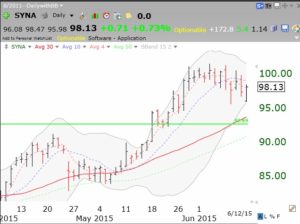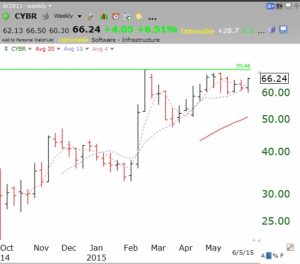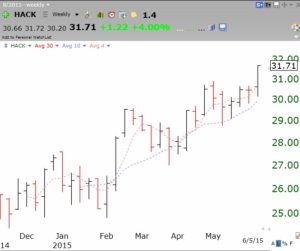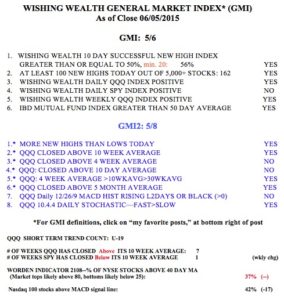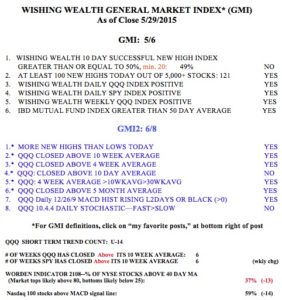The $QQQ short term up-trend could reverse down Monday with a weak day–after only 2 days of an up-trend! The prior short term down-trend lasted only 3 days. This is a schizoid market. The GMI is at 6 (of 6) but the more sensitive GMI2 is at 3 (of 8). This week may tell the story of whether we will have the June swoon. I have reduced my long positions in my trading accounts. I remain a chicken…..
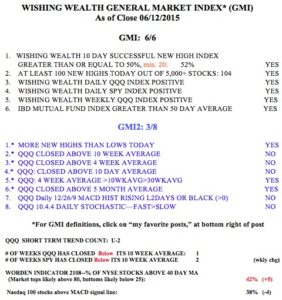 But I am always looking for strong stocks in case the market strengthens. I am keeping an eye on LOGM, which may have finished consolidating Friday after its big gap up on 4/29. LOGM is another stock that Judy has talked to me about.
But I am always looking for strong stocks in case the market strengthens. I am keeping an eye on LOGM, which may have finished consolidating Friday after its big gap up on 4/29. LOGM is another stock that Judy has talked to me about.
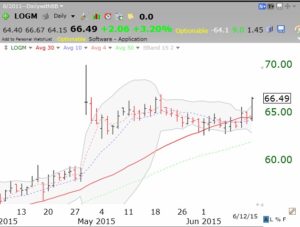 SYNA is another stock I am watching after its recent green line break-out to an all-time high.
SYNA is another stock I am watching after its recent green line break-out to an all-time high.
